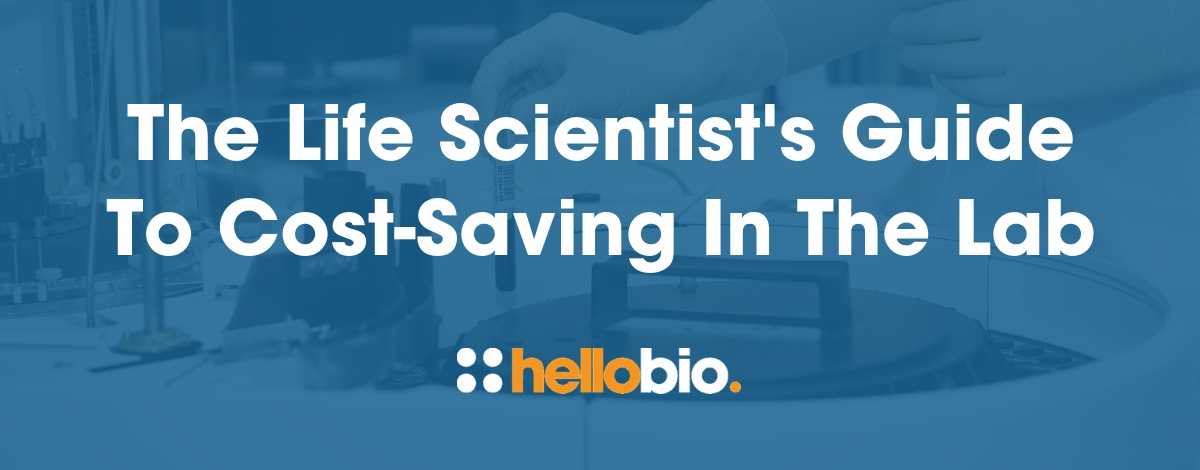How To Get The Most Out Of Your Lab Intern... From An Intern’s Perspective
It can be overwhelming, as an early career scientist, when you discover that ‘life sciences’ is a huge umbrella term for so many different fields of science that study “life” (e.g. biochemistry), and that each of these fields are then subdivided into more niche disciplines (e.g. genetics). Then, you find out that these fields and disciplines also tend to overlap at multiple levels, and are constantly growing as new discoveries are made. This, combined with all different career options out there, can give pre-PhD students a pretty complicated outlook on what to do after graduation.
Undertaking internships during my early studies was, in my case, the only way I felt I could make a decision on which master’s programme was the right fit for me. However, internships aren’t only good for deciding which direction to take (or not take), we also want our résumé’s to look good, we want to learn, and we want opportunities to network.
Having had varying experiences as an intern, I thought it would be helpful to share with those supervising or managing labs how to get the most out of your interns... from the perspective of an intern.
Preparing for your lab interns is key
When you’re first approached by a prospective intern, arrange a meeting to hear each other out. Make sure that you clearly lay out what the intern can expect from the internship – like which techniques can be practiced and which projects have room for some additional help – but also make sure to be clear about what you expect from them.
Before the internship start date, you should be in communication to exchange important details – either via meetings, video chat, or email – in order to support their smooth transition into the workplace.
Some things that are important to share before your intern starts are:
- Your preferred way of communicating (phone, email, messenger) and contact details that can be used for urgent and day-to-day communications
- Recommend or provide some reading material that’s relevant to what they’ll be working on
- Share the relevant protocols so your intern can become familiar with the project before they start
- Make a shared calendar so your intern can make the necessary preparations for each day
- Discuss all practical matters, like agreeing on the work hours, whether additional items should be brought with them (laptop, lab coat, lab book, safety glasses, etc.)
- Complete any essential paperwork
- If applicable, make sure that your intern has access to the building and the parking lot – it will definitely be an advantage if they can get in!
Start the internship with simple tasks
The first day of the internship will be the hardest one, as this is when your new recruit has to digest a lot of new information. So try to keep things as simple as possible. I recommend starting by introducing them to the rest of the team and giving a tour of the workplace. Then, you could discuss the rules of the workplace, teach how to generally clean up after experiments, and show them how to properly label samples in order for you to be able to find them after they’ve left!.
For the rest of the first day, you can ask your intern to prepare all the solutions and materials needed for their project in advance, and finish up by giving a synopsis of the project, explaining how the intern will contribute to it.
The following few days, introduce each new experiment in the context of the project. These should be demonstrated by a delegated supervisor, then performed by the intern before ‘setting them free’ into the lab. During each demonstration, keep in mind all the things that can go wrong, and put emphasis on the possible mistakes that are the most expensive – both time and money-wise – to fix. Interns are going to make mistakes – therefore explain that you would rather hear it from them directly, right away, rather than having to find it out the hard way afterwards or through other people. Some interns can be scared of admitting mistakes and would rather not mention them, so make sure you create a safe space for them to learn.
In order to maximise the autonomy of the intern, and stop them feeling overwhelmed, it's a good idea to either have them note down the locations of the products during your demonstration or provide a summary of where to find everything.
Supporting your intern’s autonomy and confidence
The sooner the shift is made from working under supervision to an autonomous workflow, the easier it will be for you and the more your intern will develop and progress.
However, when your intern is comfortable inside the lab, you can start challenging them outside the lab. For example, you could help them with analysing and interpreting their results, and perhaps ask them to prepare a short PowerPoint of their findings for the next lab meeting. If the intern is up for it and passionate about the work they’re doing, you could even take up the mantle of mentor and teach from your experience about anything else that might be interesting to them. This altruism might not directly affect the results of the project, but it can be hugely fulfilling to know that you’ve played a part in guiding your intern towards a successful career.
When the internship is over
At the end of the internship, spend some time providing your intern with feedback. Constructive feedback on areas for improvement, and encouragement around the skills they have developed, is so valuable. For example, review any work that they might have written or provide some tips on presenting in meetings.
In summary, planning for, engaging, and supporting your lab interns and providing a positive work environment has the ability to motivate them, support you in your projects, and give back to the next generation of life scientists.
______________________________
Joris Van Meenen is currently finishing up the Master’s programme in Biochemistry and Biotechnology at the University of Antwerp (BE). During his studies, he worked together with students from KU Leuven (BE) to develop a biosensor for fast and accurate quantification of Vancomycin – which won gold at the SensUs student competition. He also completed a voluntary internship at Professor Stuart Maudsley’s lab with whom he is now writing his first paper. After graduation, Joris hopes to continue his research efforts in the field of epigenetics and help in its translation to the clinic.
You can connect with Joris on Twitter at @JorisVanMeenen, and on LinkedIn here.
Find out more about Joris’s work at the links below:
● https://www.biw.kuleuven.be/biosyst/english/archiv...
● https://www.facebook.com/lifesciences.uantwerpen/p...
● https://www.researchgate.net/profile/Joris_Van_Mee...
______________________________
If you enjoyed reading this article, why not check out the other resources available on our blog. We are passionate about supporting early career life scientists and PhD students - with affordable reagents and biochemicals, travel grants, and resources to help with both personal and professional development. We know how tough it is - so we hope you find these helpful!
Advice & guidance for life scientists
Click below to view our of essential guides and articles includes to support life scientists, PhD students & early career life scientists:
Travel grants
Every month we give away $500 to PhD students and Postdocs so that they can attend a scientific conference - click below to find out more:
Wellbeing for scientists
Click below for our resources to help improve your wellbeing:
Technical resources
Try our Molarity Calculator: a quick and easy way to calculate the mass, volume or concentration required for making a solution.
Try our Dilution Calculator: an easy way to work out how to dilute stock solutions of known concentrations
Click below to see our Mini-reviews, Pathway Posters & Product Guides: a set of technical resources to answer your questions on a wide range of topics and to help you get started quickly.
And - when you get to the stage of planning your experiments, don't forget that we offer a range of agonists, antagonists, inhibitors, activators, antibodies and fluorescent tools at up to half the price of other suppliers - click below to see how we compare with other suppliers:





















